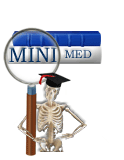1. What is the necessary mass before a problem can be deemed an epidemic?
There is no formal answer to this question. An epidemic is deemed to exist when a certain disease is observed more frequently than expected. I have attached two very different examples:
(1) Angiosarcoma of the liver in workers exposed to vinyl chloride (JAMA1974; 229: 53-54).
In 1974, this very unusual tumor had only been reported 43 times in the world literature, and it had never been observed in workers handling vinyl chloride. When Block reported five cases among workers at the BF Goodrich plant in Louisville, Kentucky, this clearly represented an unexpectedly high number of cases. In my mind, a liver cancer epidemic had been uncovered.
(2) Pneumonia and influenza in the United States (MMWR 2006; 55:1359-1362).
Pneumonia and influenza are very common, and deciding whether at any time these diseases occur more frequently than expected is more complex. The attached figure shows that a statistical approach may be used. A smooth curve corresponding to long-term trends (the previous five years) is derived from observed cases, and a theoretical baseline rate is obtained. This statistical definition of the baseline rate is then compared with actual numbers of cases. When the actual number of cases exceeds 1.645 standard deviations above the baseline (the concept of a standard deviation is defined in any 101 level statistics course; the explanations given her can be understood intuitively without a statistical training), an epidemic is deemed to be present. Further explanations can also be found in MMWR 2006; 55:312.
2. If it is accepted that drug abuse in Montreal is of epidemic proportions, please comment on the recent opening of the Canabis Clinic to help patients manage the side effects of their disease and treatment.
The Collège des médecins du Québec has very clear guidelines about medical uses of cannabis. The use of cannabis is not recognized as a medical treatment, and it must be used in a rigorous research context. The guidelines from the Collège include a link to a document providing potentially reasonnable indications for medical cannabis. These include: weight loss in HIV/AIDS, spasticity in multiple sclerosis, and certain types certain types of chronic pain.
